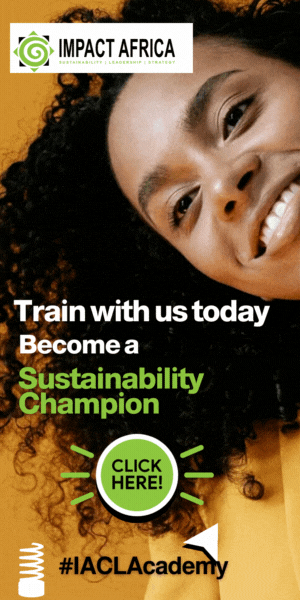Climate TRACE on Wednesday (12th November 2023) unveiled a new facility-level emissions-solutions tool in Belém, Brazil, aiming to answer a question long unresolved in global climate action: who should act, where should they act, and with which practical interventions to cut greenhouse gases most effectively.
Released on the sidelines of COP30, the tool identifies which mitigation actions can be deployed at major emitting sources worldwide, how much pollution those actions could prevent, and how difficult each measure is likely to be to implement. As governments struggle to bridge the gulf between climate ambition and practice, the tool provides the most detailed mapping to date of where real emissions reductions can occur, and what they would require.
The launch marks a notable expansion of Climate TRACE’s global database, which now covers roughly 745 million emitting assets, ranging from cement kilns and refinery stacks to landfills, farms and transportation corridors.
For the first time, the data not only measures emissions but matches each asset to at least one feasible mitigation pathway, drawing mainly from commercially available technologies such as industrial heat pumps, renewable energy integration, methane-reducing waste practices and fertilizer optimization. Where mature solutions remain limited, the tool also includes emerging options, acknowledging cost and feasibility variations across regions.
At its core is a method designed to help decision-makers move from pledges to practical planning. Every recommended solution is paired with an estimate of how much emissions could be cut if implemented at that specific asset, along with a difficulty score that blends expected effectiveness, cost and technical complexity. The intention is to guide users, from ministers to municipal waste managers to corporate sustainability teams, toward interventions likely to deliver the largest climate impact with the least friction.
The African continent remains home to some of the world’s fastest-growing energy demand, rapidly expanding cities and industrial bases that are still in their formative stages. However, only a small fraction of global climate finance reaches African economies. Climate TRACE’s broader analysis highlights that developing countries outside China received just 17 percent of global clean-energy investment last year; moreover, 90 percent of climate finance typically stays within the investor’s home country.
Such imbalances persist not because African opportunities are scarce, but because investors often lack reliable, comparable information on where interventions would deliver the greatest emissions reductions.
By pinpointing mitigation opportunities asset by asset, the new tool directly addresses this information gap. Climate TRACE estimates that deploying mature climate solutions in developing countries can cut up to three times more emissions per dollar invested than similar actions in developed economies. For African countries, where grids are often emissions-intensive, industrial facilities are still modifiable, and waste systems are undergoing structural expansion, the potential for high-impact, cost-effective decarbonization is unusually strong.
Read also: IEA World Energy Outlook 2025: What soaring electricity demand means for Africa’s energy future
Examples drawn from the accompanying white paper illustrate how this might play out. In the cement sector, which accounts for a rising share of Africa’s industrial emissions as construction booms, the tool identifies techniques such as co-processing of agricultural residues and waste fuels. One Kenyan facility already applying the method has demonstrated annual emissions reductions of close to 300,000 tones of CO₂ equivalent, suggesting scalable regional gains if similar plants adopt the same operational shift.
In municipal waste, a sector often overlooked despite its growing emissions footprint, Climate TRACE modelling suggests that targeted bio-cover deployment and improved landfill management at the continent’s highest-emitting sites could sharply reduce methane emissions, a gas significantly more potent than CO₂ in the near term.
The tool also gives African ministries a new way to prioritize limited resources. A low difficulty score, for example, may signal an intervention that requires minimal capital expenditure but yields substantial cuts, such as fuel switching in cement kilns or improved composting and waste diversion programmes in urban centers. Higher-difficulty actions, such as advanced steel retrofits or grid-wide renewable integration, still appear in the dataset, but are clearly marked as requiring more planning, policy support or concessional finance. This separation helps governments pursue fast wins while also charting longer-term structural transitions.
Africa’s opportunity is sharpened by current global trends. Climate TRACE notes that global emissions grew modestly this year despite record renewable deployment, with fossil systems in middle-income regions still driving most of the increase. Because Africa’s infrastructure base is still being built, the location of new investments will determine whether the continent locks into high-emitting pathways or leapfrogs straight into lower-carbon, more efficient systems. The new tool gives planners a granular picture of what leapfrogging looks like in practice, not just by sector, but by asset, city and facility.
Read also: African Union launches science-led frontline against disaster risks
While the tool cannot substitute for the political, financial and institutional reforms required to accelerate climate action, it provides a clear starting point. It answers questions that have slowed investment for years: where are the highest-impact interventions, which of them are practical in today’s conditions, and what scale of emissions reduction could realistically be achieved?
Climate TRACE positions its work as the beginning of a more transparent global mitigation marketplace.
Engage with us on LinkedIn: Africa Sustainability Matters






